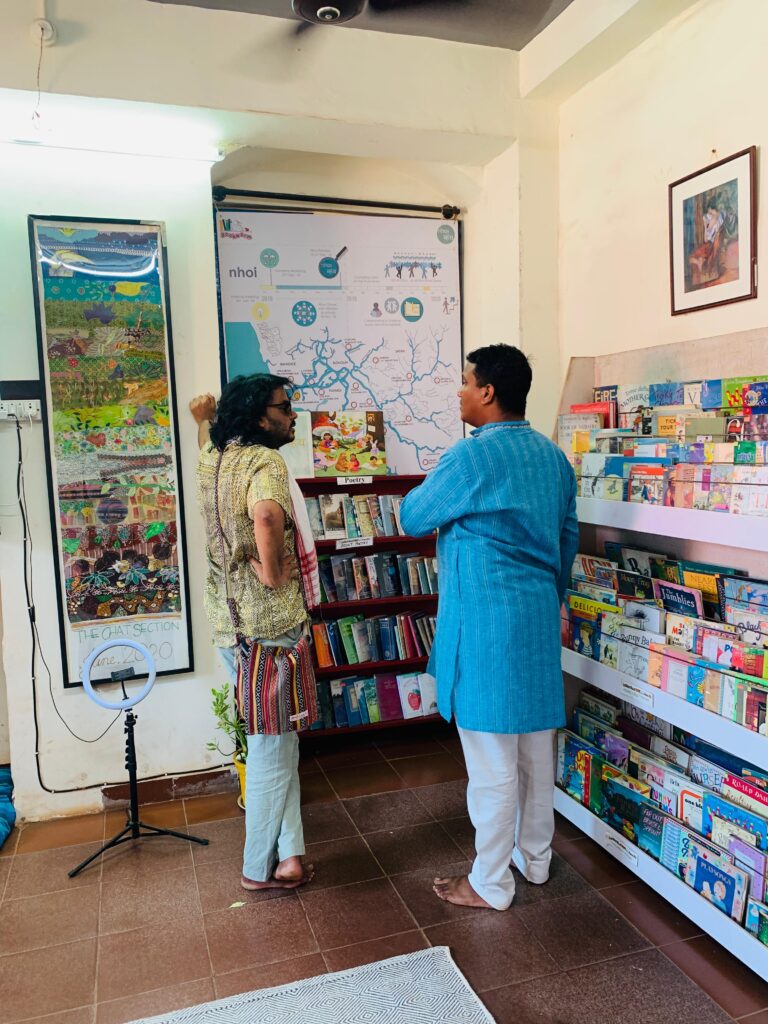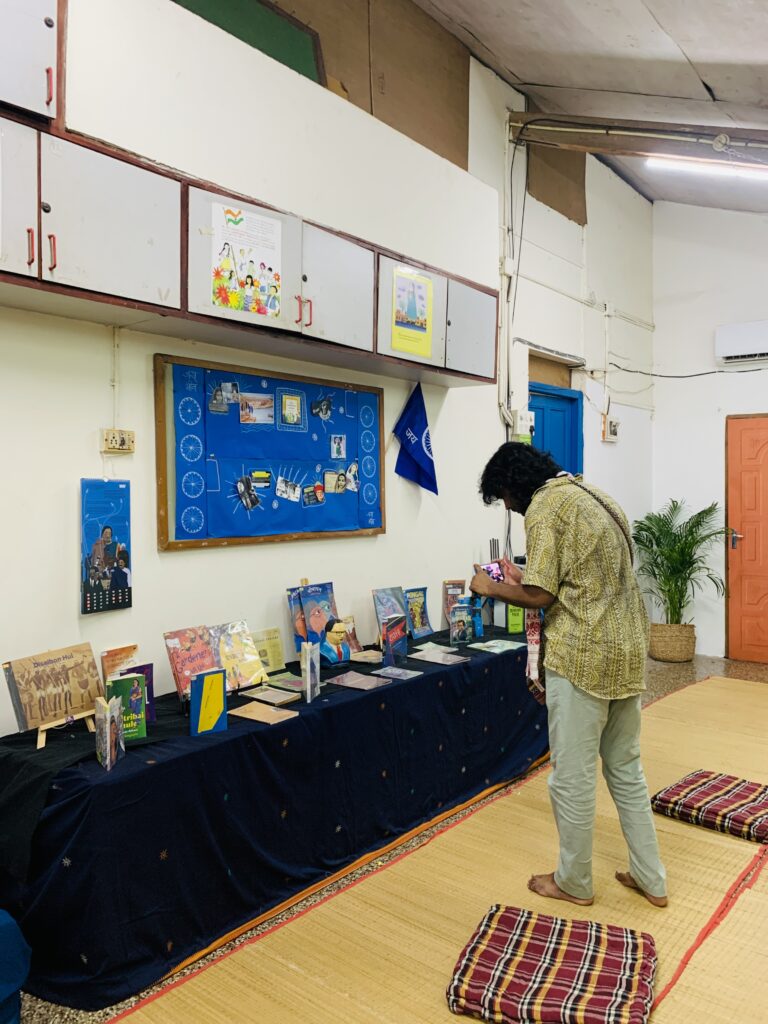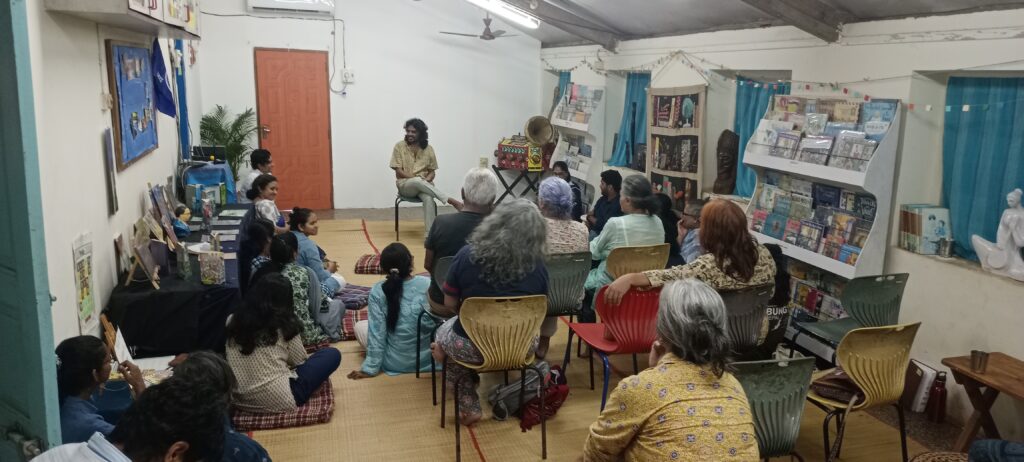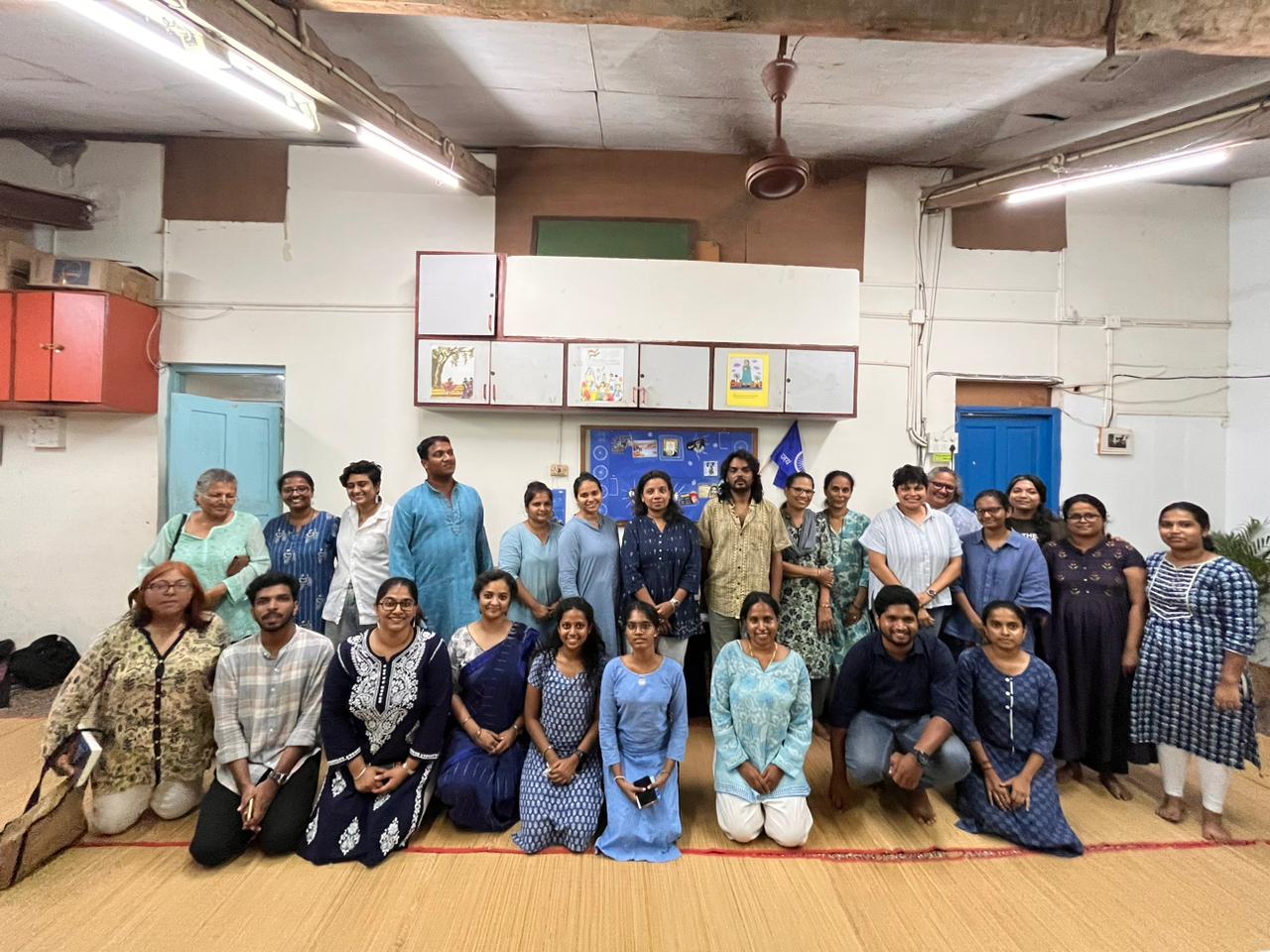Somnath Waghmare’s film, Chaityabhumi, had been popping up on my social media feed for some months. I often paused and eyed the blue-tinged poster with curiosity. I had been piecing together bits of information from a dozen tweets – the documentary film was screened at Columbia University; Somnath was a research scholar at TISS, Mumbai; it had footage collected from Dr. Babasaheb Ambedkar’s memorial shot over 3-4 years.
In December 2023, I chanced upon the Ambedkar Age Digital Book Mobile Project at the Serendipity Arts Festival. Much to my surprise I realised that it was the same Somnath who was a co-curator of this exhibition along with artist and educator, Smita Rajmane. My interest thoroughly piqued, I silently hoped that I could watch Chaityabhumi someday.
So, imagine my delight when we had an opportunity to host the filmmaker and screen the documentary at the Bookworm Library in May 2024!
Why should the library screen a documentary on B.R. Ambedkar and his memorial?
Libraries continue to be among the few public institutions that remain bastions of free thought and expression today. Libraries have an important role to play within communities, creating spaces for discussion and cross-sharing on a range of issues. The complexities of caste dynamics remain under-represented, or to borrow a term from anti-caste author, Yashica Dutt, it is invisibilised in our society.
This documentary explores the history of Mumbai’s Dalit Community’s relationship with Ambedkar and the sacred site where he was laid to rest. A dialogic relationship between citizens is something we truly believe in and it was our hope that the documentary should reach more people across Goa.
On the day of the screening, we were happy to have Somnath with us. Quiet and unassuming, yet warm and friendly, it was a pleasure to interact with him.
People had just started coming in. I was by a doorway when a family of four from Pune who were exploring Fontainhas (the neighbourhood that the library is located in), asked if they could come in to explore the library. The gentleman spotted the poster about the Film Screening on the door. He stopped in his tracks and asked me, “Is Chaityabhumi going to be screened here?” I responded with a yes and mentioned that the film maker was in the library as well.
Oh! The joy of seeing a face light up! His excitement to meet Somnath was palpable. He had been following Somnath’s work for some time and he wanted his family to meet him too. The library can be a place of magical meetings! So, there we were, the family of four and me trooping upstairs to the hall to watch the film and meet Somnath.
Chaityabhumi is a 67-minute-long documentary that begins in Rajgruha, Babasaheb’s home and then takes us to Chaityabhumi, the sacred site where he was buried following his death. It has been called an observational documentary. For me, it was almost a meditative experience. We enter Chaityabhumi with people who are there to remember and celebrate Babasaheb. Unlike typical documentaries, there is no voice over guiding us. We are guided by our own senses and there is much to pay attention to in each frame – adults and children entering Chaityabhumi, books being sold at the venue, songs being sung, the reading and the listening, leaders speaking to the community, the day sky changing hues and music seeping into the night. The few interviews which dot the film spotlight individual experiences and tell us how each one’s story of Chaityahumi is unique and significant.
I came in not knowing what to expect from the viewing experience. But I left feeling hopeful. Watching this against the backdrop of an important Lok Sabha election, the songs, the speeches and the sharing by various interviewees reminded me about the significance of the Ambedkarite movement and how much Ambedkarites continue to do to uphold the Constitution. They keep Constitutional ideas alive in public discourse in beautiful and powerful ways! The songs in the film are an example of this. I loved the songs that are interspersed throughout the film. Their lyrics made me sit up and listen carefully. I understood why Babasaheb continues to be an icon for so many across the world.
Towards the end, it was especially wonderful to spot Somnath himself in some of the shots – it was an interesting touch where the filmmaker becomes a subject and looks at himself in viewing the film.
Libraries for me, embody Hope, Rational Thought and Freedom. What a beautiful thing it was to find strains of these ideas reflected in the multi-coloured tapestry of Somnath’s, Chaityabhumi.




